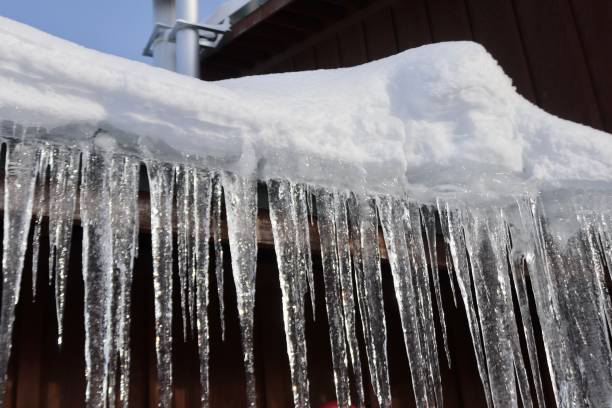Tips to Defend Your Plumbing from Freezing: Key Advice
Tips to Defend Your Plumbing from Freezing: Key Advice
Blog Article
Just about every person has got their personal theory about How to Prevent Your Pipes From Freezing.

Winter can ruin your plumbing, especially by freezing pipes. Right here's how to stop it from occurring and what to do if it does.
Intro
As temperatures decline, the danger of frozen pipes boosts, potentially leading to costly repairs and water damage. Recognizing just how to stop icy pipes is crucial for home owners in chilly environments.
Understanding Icy Pipes
What creates pipelines to freeze?
Pipes ice up when revealed to temperature levels listed below 32 ° F (0 ° C) for expanded periods. As water inside the pipelines ices up, it increases, taxing the pipe walls and potentially triggering them to break.
Risks and damages
Icy pipelines can result in supply of water interruptions, property damage, and expensive repair services. Burst pipes can flooding homes and cause extensive architectural damage.
Signs of Frozen Pipeline
Determining icy pipelines early can prevent them from bursting.
Just how to determine icy pipelines
Search for decreased water circulation from taps, unusual smells or sounds from pipes, and noticeable frost on exposed pipelines.
Prevention Tips
Protecting at risk pipes
Cover pipelines in insulation sleeves or utilize warmth tape to protect them from freezing temperatures. Focus on pipelines in unheated or exterior areas of the home.
Heating strategies
Maintain interior spaces appropriately warmed, specifically areas with pipes. Open up cabinet doors to allow cozy air to flow around pipelines under sinks.
Shielding Outside Plumbing
Yard hose pipes and outdoor taps
Separate and drain yard hose pipes prior to winter. Mount frost-proof faucets or cover outside taps with protected caps.
What to Do If Your Pipelines Freeze
Immediate actions to take
If you presume frozen pipelines, maintain taps open up to alleviate stress as the ice melts. Make use of a hairdryer or towels soaked in warm water to thaw pipes slowly.
Long-Term Solutions
Architectural changes
Take into consideration rerouting pipelines far from exterior wall surfaces or unheated locations. Include extra insulation to attic rooms, cellars, and crawl spaces.
Updating insulation
Buy top notch insulation for pipes, attics, and walls. Proper insulation helps maintain constant temperatures and decreases the danger of frozen pipelines.
Verdict
Preventing icy pipes requires proactive measures and quick actions. By comprehending the causes, signs, and preventive measures, homeowners can protect their plumbing throughout winter.
6 Proven Ways to Prevent Frozen Pipes and Protect Your Home
Disconnect and Drain Garden Hoses
Before winter arrives, start by disconnecting your garden hoses and draining any remaining water. Close the shut-off valves that supply outdoor hose bibs and leave the outdoor faucet open to allow any residual water to drain. For extra protection, consider using faucet covers throughout the colder months. It’s also important to drain water from any sprinkler supply lines following the manufacturer’s directions.
Insulate Exposed Pipes
Insulating your pipes is an effective way to prevent freezing. Pipe insulation is readily available at home improvement stores and is relatively inexpensive. Pay close attention to pipes in unheated areas such as the attic, basement, crawl spaces, or garage. Apply foam insulation generously to create a buffer against the cold. You can also wrap your pipes in heat tape or thermostat-controlled heat cables for added warmth.
Seal Air Leaks
Inspect your home for any cracks or openings that could let in cold air. Seal any holes around the piping in interior or exterior walls, as well as the sill plates where your home rests on its foundation. Additionally, make sure to keep your garage door closed unless you’re entering or exiting. Leaving it open creates a significant air leak that can lead to frozen pipes.
Allow Warm Air Circulation
During cold snaps, it’s essential to allow warm air to circulate evenly throughout your home. Leave interior doors ajar to promote better airflow. Open kitchen and bathroom cabinets to help distribute heat consistently around the rooms. If you have small children or pets, be sure to remove any household chemicals or potentially harmful cleaners from open cabinets for safety.
Let Faucets Drip
A small trickle of water can make a big difference in preventing ice formation inside your pipes. When temperatures drop significantly, start a drip of water from all faucets served by exposed pipes. This continuous flow helps prevent the water from freezing. Additionally, running a few faucets slightly can relieve pressure inside the pipes, reducing the chances of a rupture if the water inside does freeze.
https://choateshvac.com/6-proven-ways-to-prevent-frozen-pipes-and-protect-your-home/

I'm certainly very inquisitive about How to prepare your home plumbing for winter weather and I hope you enjoyed the new entry. Be sure to take a moment to share this article if you enjoyed it. Thanks a lot for going through it.
Suggested Site Report this page